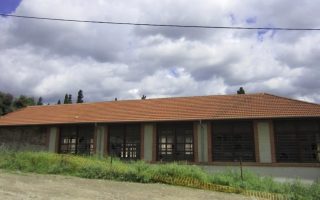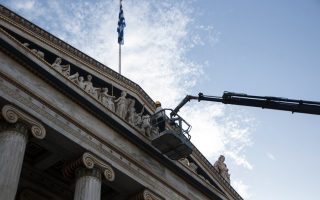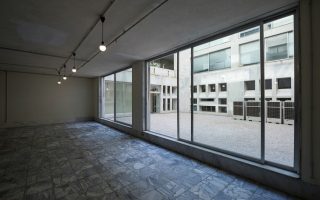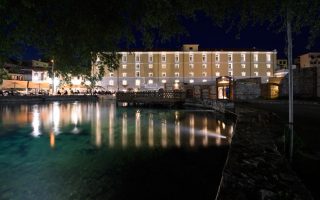The fire that transformed Thessaloniki
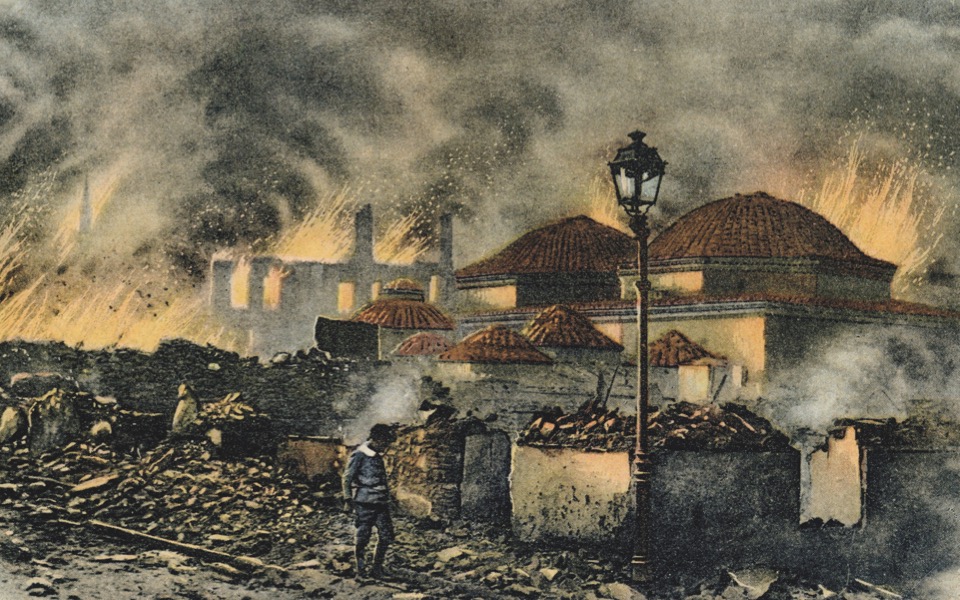
“The new plan for Thessaloniki is ready. It will be implemented from now on. There are a few public buildings remaining and the post office is ready but there’s no money […] Like the plan for Athens, the war is absorbing everything […] I am fascinated by Thessaloniki and would like to stay involved,” wrote French architect Ernest Hebrard to his friend and colleague Henri Prost in July 1921.
It was four years after the great fire of August 5, 1917, which razed most of Thessaloniki’s historic center – homes, churches, mosques, synagogues, offices, stores and workshops – within 32 hours, destroying 9,500 buildings and leaving an estimated 77,000 people homeless: 55,000 Jews, 10,000 Muslims and 10,000 Christians.
Reconstruction began in earnest in 1921, on the basis of a radical rejuvenation plan.
This year is the centenary of the fire and the anniversary will be marked with lectures, publications and exhibitions recounting the blaze and conveying what life was like in the city before and after the disaster. The anniversary is also prompting researchers to analyze questions related to the biggest city revamp Greece has ever seen.
What would Thessaloniki look like today if it weren’t for the blaze? Was 1917 a unique opportunity to plan ahead for a big city that could survive present-day pressures? What were the effects of the destruction on the different communities?
These are questions that have been examined at length by urban planning and history of urban planning Professor Emeritus Alexandra Yerolymbos in her lengthy bibliography. Her two latest works are anniversary editions, “Fortified Camp, Unfortified City: The Destruction and Reformation of Thessaloniki after the 1917 Fire” (University Studio Press) and the 2017 Diary for the Museum of the Macedonian Struggle.
“Many argue that the chance was lost to elevate Thessaloniki into a metropolitan center with a European character,” the expert says. “This point of view not only does an injustice to the efforts made at the time, but also glosses over the mistakes of later initiatives. True, the authorities were unable to control this or to give the city a future with much more favorable conditions. But in the 1970s, certain researchers – myself among them – began to realize the magnitude and significance of the intervention, which was the result of strong political will.”
Just six days after the catastrophe, in fact, the government of Eleftherios Venizelos had set the course, ordering the expropriation of all the scorched land and the reallocation of the plots so they could be put up for auction. Without bending to the reactions of the former plot owners, it put together an international committee tasked with the overall redesign of the city center focused on endowing Thessaloniki with a new identity and the “revival of the city’s memory.”
Studies have shown that if the historic center had not been destroyed, Thessaloniki would likely have spread east, outside its ancient fortifications. In that respect, the fire “liberated” the city’s core, explains Yerolymbos. She argues that Thessaloniki owes its present form to the 1917 plan, even though its commitment to quality of life and public space was undermined by the settlement of refugees in 1922 and particularly by the construction boom that started in the 1950s, which resulted in more and more concrete, increasing numbers of cars and shrinking green spaces.
Tasked with presenting an innovative plan for the city, Hebrard’s vision was incredibly forward-looking. It included a metro line running along a route very similar to that being built today, a public square commemorating the city’s history, and initiatives to protect and promote monuments from every chapter of Thessaloniki’s past, with the aim of turning it into a tourism destination.
“Without the fire and Hebrard’s plan, it is almost certain that the center of Thessaloniki would today look much like its outskirts: dense upward construction on small plots built with the ‘antiparochi’ system [whereby landowners would turn over their plots to contractors to build apartment blocks in exchange for a flat or two], demolishing traditional homes,” argues Vassilis Kolonas, a professor of architecture. Kolonas has researched the topic extensively and is the author of “A Hundred Years of Architecture: Thessaloniki 1912-2012” (University Studio Press).
Lasting traces
The fire, he claims, did much less harm to the city’s overall image than the introduction of the antiparochi system. However, experts agree that despite the rampant construction of the 1950s, 60s and 70s, Hebrard’s legacy is still evident today.
Dr Athina Vitopoulou was one of the students at the Aristotle University of Thessaloniki who studied Hebrard’s plan in 1995, and points out elements where we can still see the French architect’s vision. Among these is the downtown area’s arrangement in a grid pattern with openings to the sea, large streets or axes leading from important monuments, the preservation of the old town in Ano Poli, the positioning of the Aristotle campus, the expansion of the port to the west of the city rather than toward the center, the preservation of a green ring (Seikh Sou Forest) and the monumental axis of Aristotelous Street and Square. Building facades are also among these features.
“Well read in archaeology, the French architect studied Thessaloniki extensively and recommended a balance between international architectural trends and local Byzantine traditions, which resulted in a public image that was a departure from the overbearing eclecticism of the Ottoman era,” explains Vitopoulou.
Hebrard’s vision inspired many of his predecessors, particularly in the 1920s and 30s, with visible results.
“If it were not for the vulgar architecture of the antiparochi, Thessaloniki would be a charming inter-war city with nothing to envy from Algiers, Casablanca or Buenos Aires, cities that bear the mark of architects with the same French influences,” says Vitopoulou.
